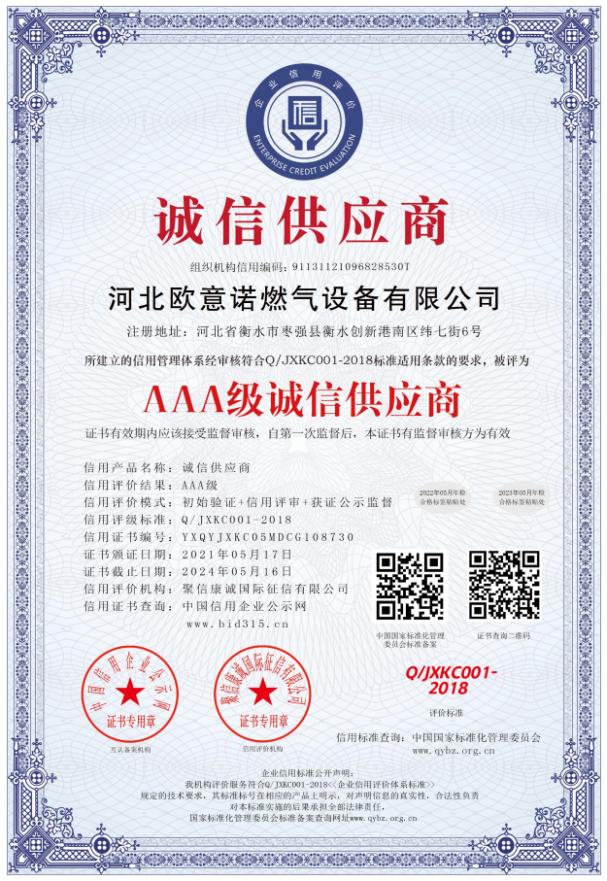
Nov . 14, 2024 22:23
Back to list
gas pressure reducing valve
Understanding Gas Pressure Reducing Valves
Gas pressure reducing valves (PRVs) are vital components in various applications, ensuring that gas is delivered at a safe and controlled pressure. These valves play a crucial role in systems that utilize gas, such as residential heating, industrial processes, and gas distribution networks. By controlling the pressure of incoming gas, PRVs protect equipment and enhance overall system efficiency.
The Functionality of Gas Pressure Reducing Valves
At its core, a gas pressure reducing valve serves to decrease a higher inlet gas pressure to a desired lower outlet pressure. This is essential in applications where the pressure supplied by the gas source, such as a pipeline or cylinder, exceeds the needs of the end-user equipment. For instance, a natural gas line may deliver gas at pressures up to 60 psi, while household appliances typically require it at around 5 psi. Failure to regulate this pressure can lead to equipment damage, safety hazards, and inefficient operation.
The mechanism of a PRV involves a spring-loaded diaphragm or piston that adjusts the flow of gas based on the outlet pressure setpoint. When the gas pressure at the outlet exceeds the preset level, the diaphragm moves to close the valve, thereby reducing the gas flow. Conversely, if the outlet pressure drops below the desired level, the diaphragm opens the valve to allow more gas through. This automatic adjustment helps maintain a consistent pressure, ensuring that downstream equipment operates safely and efficiently.
Types of Gas Pressure Reducing Valves
There are several types of gas pressure reducing valves, each suited for different applications and operating conditions
1. Single-Stage Pressure Regulators These are used for applications where large fluctuations in inlet pressure are not expected. They typically maintain outlet pressure through a simple diaphragm mechanism.
2. Two-Stage Pressure Regulators These are used in applications where a wider range of inlet pressure fluctuations occurs. The first stage reduces the high inlet pressure to an intermediate level, and the second stage further reduces it to the desired outlet pressure. This two-step process provides greater stability and accuracy in pressure control.
3. Electronic Pressure Regulators Equipped with sensors and control systems, these regulators provide precise, automated pressure adjustments that can be programmed based on operational needs. They are commonly used in advanced industrial applications.
gas pressure reducing valve

Applications of Gas Pressure Reducing Valves
Gas pressure reducing valves are extensively used in various industries, highlighting their importance
- Residential and Commercial Heating PRVs are commonly employed in gas heating systems to ensure that furnaces and boilers receive gas at appropriate pressures for safe and efficient operation.
- Industrial Processes Many manufacturing processes utilize gases that require precise pressure regulation to optimize performance and ensure safety.
- Gas Distribution Networks Utilities use PRVs in the gas distribution system to maintain consistent delivery pressures across a network, safeguarding infrastructure and end-user installations.
- Laboratories and Research Facilities In laboratory settings where gases are used for experiments, PRVs are essential to ensure that sensitive equipment is not damaged by excessive pressure.
Safety and Maintenance
Regular maintenance of gas pressure reducing valves is crucial to ensure their safe and effective operation. Periodic inspections should be conducted to check for leaks, wear, and tear, or any signs of failure. It is also important to ensure that the set pressure remains within the desired range, and adjustments should be made by qualified personnel when necessary.
Additionally, safety features like pressure relief valves may be integrated with PRVs to provide an extra layer of protection against overpressure situations. Understanding these components and their functions is essential for anyone working with gas systems.
Conclusion
Gas pressure reducing valves are indispensable for the safe and efficient use of gas in various applications. By ensuring that gas is delivered at the appropriate pressure, PRVs not only protect equipment but also enhance the overall performance of gas-utilizing systems. Whether in residential settings, industrial applications, or gas distribution networks, the proper functioning of these valves is crucial for safety and efficiency. As technology advances, we can expect to see even more sophisticated pressure regulation solutions that improve our interaction with gas systems.
Next:
Latest news
-
Safety Valve Spring-Loaded Design Overpressure ProtectionNewsJul.25,2025
-
Precision Voltage Regulator AC5 Accuracy Grade PerformanceNewsJul.25,2025
-
Natural Gas Pressure Regulating Skid Industrial Pipeline ApplicationsNewsJul.25,2025
-
Natural Gas Filter Stainless Steel Mesh Element DesignNewsJul.25,2025
-
Gas Pressure Regulator Valve Direct-Acting Spring-Loaded DesignNewsJul.25,2025
-
Decompression Equipment Multi-Stage Heat Exchange System DesignNewsJul.25,2025

